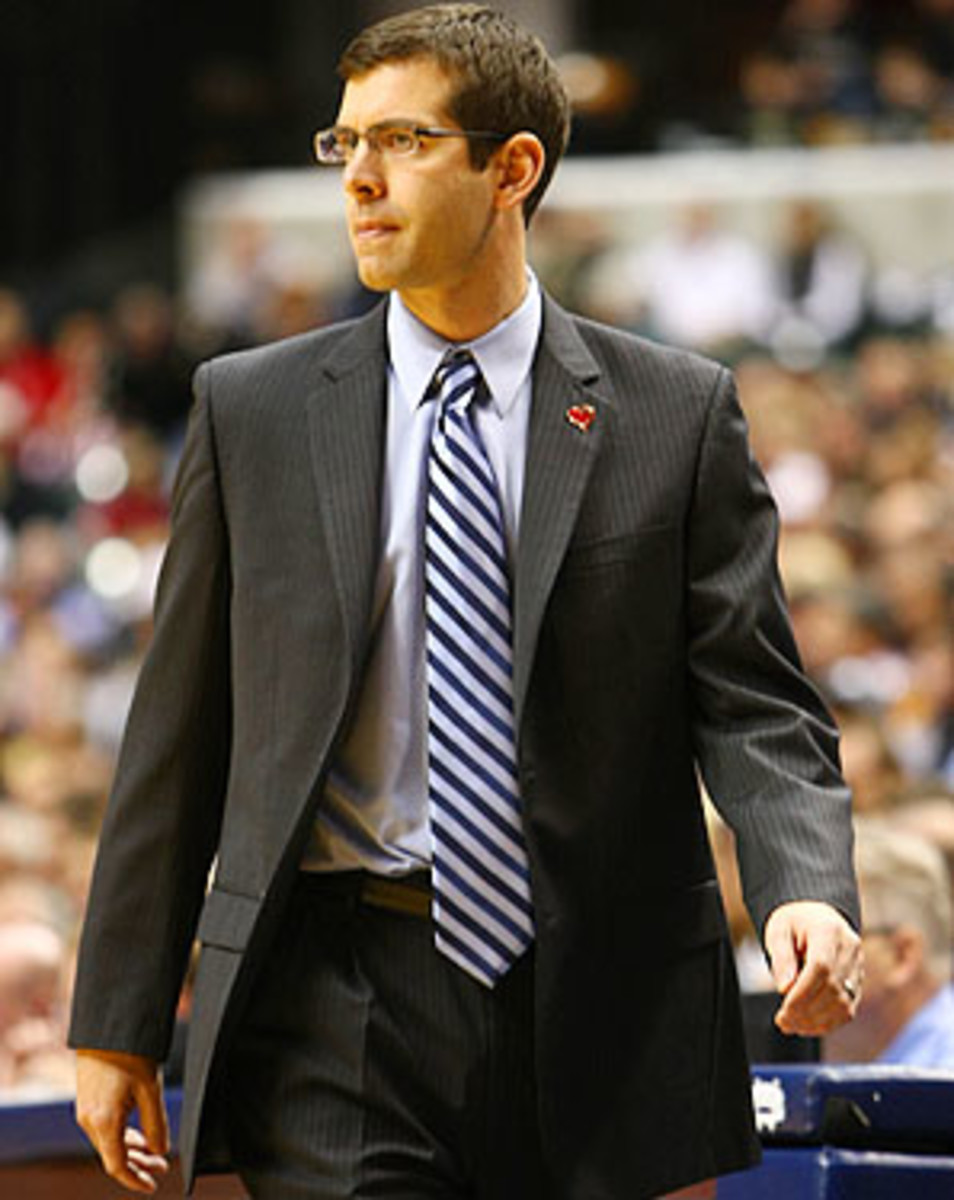History shows Butler doesn't need to change to thrive in Atlantic 10
What does not make sense (to me) is the notion that Butler will need to seriously upgrade itself in order to compete in the A-10. When news broke of the move, which takes effect July 2013, the media consensus was that the Bulldogs' M.O. would have to change in the face of bigger-conference pressures. Hall-of-Famer Mike DeCourcy of The Sporting News wrote that Butler would be "fundamentally altered," and said of the Butler Way, "unless they pitch those themes to a different sort of player they'll struggle to excel in the same fashion as before."
Gary Parrish of CBSSports.com blogged that unless recruiting and facilities change, "America's most beloved college basketball program could find itself in waters that are a little too deep because the A-10 is a significant step up in competition." Dan Wolken of The Dailytweeted that "Butler has to improve their facilities, budget, number of charters and get higher-caliber recruits to be a factor in that league."
All three gentlemen are regular, much-respected reads of mine, and I would be saying the same thing had Butler joined, say, the Big East. The Bulldogs' M.O. wouldn't fly in that environment, even though they've been to two national title games in the past three seasons. But the A-10 is a far cry from a power conference. What it'll get in Butler isn't a striver that aims to grow itself into an A-10 caliber program, but rather an already-capable co-headliner to pair with Xavier. Brad Stevens, just as he was in the Horizon, will be the league's highest-profile, highest-paid coach. The A-10, which is losing Temple after next season, needs Butler more than Butler needs the A-10.
Butler may very well make facility and travel upgrades to coincide with the move, and Stevens' recruiting abilities may be enhanced due to the exposure that the A-10 offers, in which case we'll never know who's right. Part of me wishes the Bulldogs would stay exactly the same -- to continue without a practice facility, keep Hinkle Fieldhouse as-is and keep recruiting the same types of kids -- just to prove that quaintness and success are not mutually exclusive at their new level. Because history suggests that had Butler been in the A-10 this entire time, it would have been doing just fine.
The most beneficial thing about adjusted, tempo-free stats are that they allow us to evaluate all 345 Division I teams -- teams that play at widely different paces, against widely difference schedules -- on the same level. We can take Butler, out of the Horizon League, and see where it stacks up against the A-10 elites. In 2011-12, Butler had a rebuilding/transitional/comedown season, missing the NCAA tournament but still finishing 22-15. It ranked 110th in adjusted efficiency on kenpom.com, which would have made it about the ninth- or 10th-best team in the A-10, rather than the third-best team in the Horizon. The Bulldogs' closest A-10 comparison was Richmond, which finished 16-16. The lesson, I guess, is that it will be harder to "mask" a mediocre season in the A-10.
But in 2010-11, Butler ranked 41st in adjusted efficiency, which put its projected A-10 finish at first or second place. It would have been on the same level with league champ Xavier (45th in efficiency), runner-up Temple (38th) and third-place Richmond (43rd). All three of those teams went on to win NCAA tournament games, but not nearly as many as the Bulldogs did.
In 2009-10, Butler ranked 12th in adjusted efficiency, which means it was slightly better than the excellent Xavier (14th) and Temple (22nd) teams that tied for first in the A-10. The Bulldogs also went to the national title game.
In 2008-09, Butler ranked 45th in adjusted efficiency. Its projected A-10 finish would have been second, behind a great Xavier team (20th) and just ahead of Temple (47th). This is the season two exceptional players with NBA futures, Gordon Hayward and Shelvin Mack, arrived at Butler, and I think many other columnists would note -- with good reason -- that it's not as if Stevens can pull off recruiting coups like this on the regular. Or even occasionally. Hayward and Mack might be once-in-a-few-decades kinds of players for the program, and so if we're trying to gauge how Butler might fare in the future, it would be wise to look at teams that didn't include NBA prospects. So let's do that:
In 2007-08, Stevens' first year as head coach, without Hayward or Mack on the roster, the Bulldogs ranked 32nd in adjusted efficiency. Their projected finish in the A-10? Second, behind Xavier (18th) and well ahead of the next-best team, St. Joseph's (54th).
In 2006-07, under Todd Lickliter -- and this is before Butler icon Matt Howard was even on the roster -- Butler ranked 25th in adjusted efficiency. That season, Xavier (40th) and UMass (65th) tied for first in the A-10, and Butler was statistically superior to both of them.
If you weren't counting, or your eyes glazed over once all the numbers came out, here's the bottom line: The best metric we have for evaluating teams suggests that, over the past six seasons, Butler would have finished first or second in the A-10 five times and made five NCAA tournament appearances. That's with Horizon League recruits, Horizon League coach, Horizon League facilities and a $3.5 million Horizon League budget -- which, since we're making comparisons, would have ranked third in the A-10 for 2011, behind only Richmond and Dayton.
The A-10 may change Butler, but Butler doesn't need to change to remain competitive. Most of the A-10, aside from Xavier and soon-to-depart Temple, would've had a hard time competing with the past six versions of Butler.





